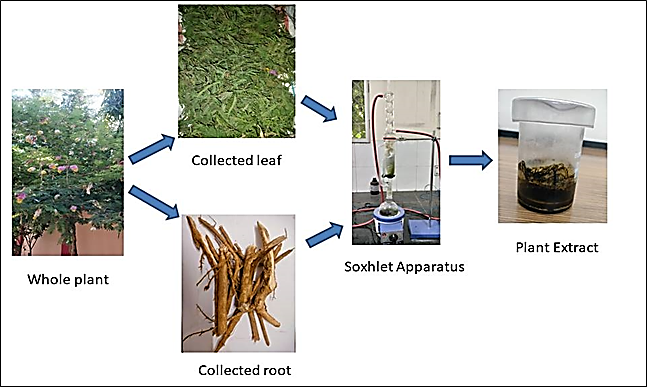- Printed Journal
- Indexed Journal
- Refereed Journal
- Peer Reviewed Journal

Journal of Pharmacognosy and Phytochemistry
Vol. 14, Issue 6 (2025)
Evaluation of larvicidal effect of Prosopis cineraria against Aedes aegypti (Diptera: Culicidae)
Suraj Prasad and Sushil Kumar
Mosquito species Aedes aegypti (Ae. aegypti) act as a carrier for dengue and chikungunya virus, particularly throughout tropical regions. Concerning the growing resistance to chemical insecticides, researchers need to find safe plant-based options for mosquito control. This study evaluated the larvicidal potential of Prosopis cineraria (P. cineraria) against the 3rd and 4th instar larvae of Ae aegypti. Moreover, plant leaves and roots were extracted using aqueous, methanol, acetone, and hexane through soxhlet method, followed by their phytochemical screening and larvicidal assay. We found that methanolic extracts especially showed the richest profile of phytochemicals like strong presence of flavonoids and phenols. All plant extracts showed larvicidal activity that increased with higher dose and more time exposure, but leaf extracts performed better than root extracts only. Remarkably, the methanolic leaf extract demonstrated the highest efficacy, achieving a median lethal concentration (LC50) of 223.27 ppm and LC90 of 566.51 ppm after 48 hours of exposure. This leaf extract showed a marked increase in toxicity from the 24-hour exposure, which had an LC50 of 393.80 ppm. In comparison, the aqueous leaf extract was less potent, with a 48-hour LC50 of 240.63 ppm, while the methanolic root extract was significantly weaker, with a 48-hour LC50 of 404.94 ppm. The overall solvent efficacy for leaf extracts was ranked as methanol > aqueous > acetone > hexane. Additionally, combined methanolic extracts of leaf and root showed enhanced synergistic effects. These findings, particularly the potent larvicidal values of the methanolic leaf extract, establish their importance against dengue vector Ae. aegypti.

Fig. 1: Sequential process of plant material collection and extraction of P. cineraria: Whole plant → Collected leaf and root → Drying and preparation → Soxhlet extraction with different solvents → Concentrated crude extract
Pages: 85-91 | 92 Views 38 Downloads









